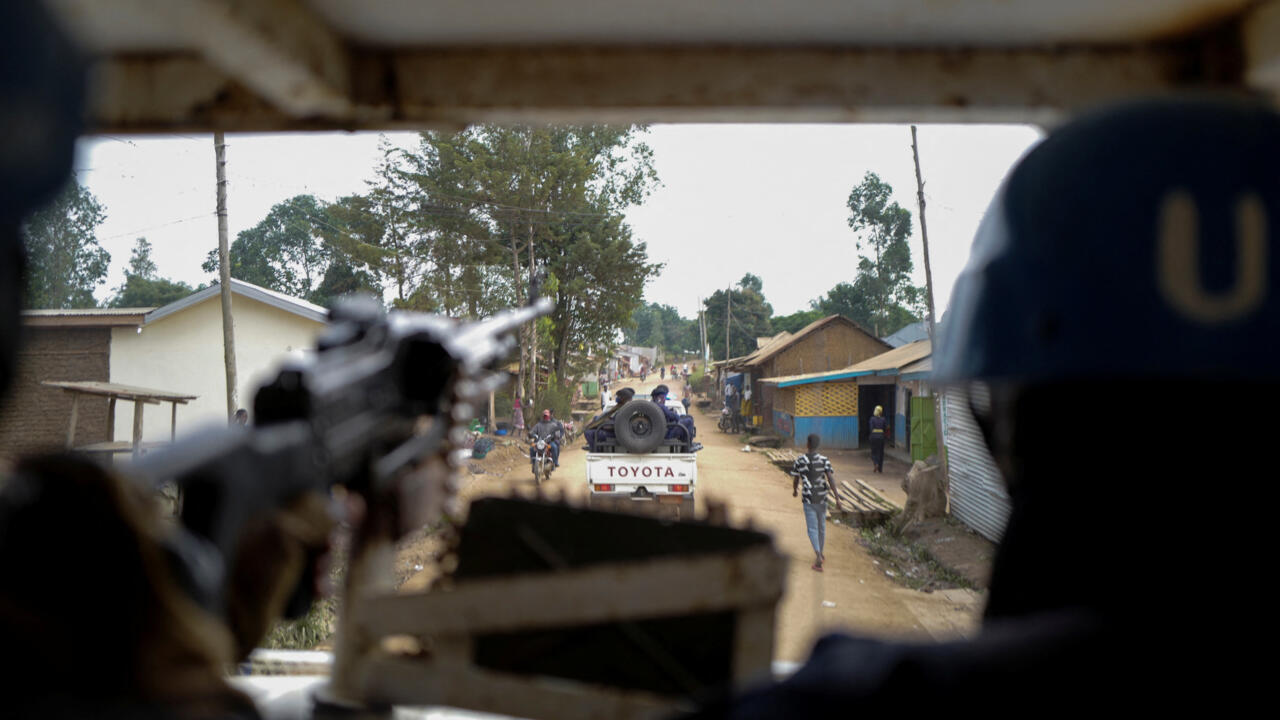The UN Mission in the Democratic Republic of Congo (MONUSCO) begins its withdrawal from the country on Wednesday February 28, demanded by Kinshasa which considers it ineffective, with the official handover to the Congolese authorities of the first of its bases in South Kivu (east). ).
After 25 years of presence, the departure of the Blue Helmets was recorded in December by the United Nations Security Council, despite its concerns about the escalation of violence in eastern Congolese.
MONUSCO (formerly MONUC), which currently has around 15,000 peacekeepers, is still present in the three most troubled provinces in the region, South and North Kivu, as well as Ituri.
For a withdrawal that the UN and Kinshasa say they want to be "orderly, responsible and sustainable", a three-phase "disengagement plan" was adopted.
The first plans the withdrawal of MONUSCO from South Kivu, by April 30 for its soldiers and police, and June 30 for its civilian component.
Before May, the UN force is therefore supposed to leave its 14 bases in the province and hand them over to the Congolese security forces.
That of Kamanyola, very close to the Burundian and Rwandan borders, is the first whose keys will be handed over to the national police (PNC).
A few hours before the ceremony, opinions are divided in the city of a hundred thousand inhabitants.
“It doesn’t make me feel either hot or cold,” says Ombeni Ntaboba, president of the local Youth Council.
Every evening, he said, "we saw them walking in armored vehicles towards the Ruzizi plain", a border strip under threat from residual armed groups.
“But there is still insecurity, armed robberies, kidnappings…” continues the young man.
“Security vacuum”
"We welcome the decision of the Congolese government", declares Mibonda Shingire, human rights activist, who just says she fears "the negative impact on the economic level", since the inhabitants of Kamanyola had "employment at the base of the Monusco.
On the contrary, some fear "the security vacuum" left by the departure of the Pakistanis from the Kamanyola base, like Joé Wendo, a teacher.
“With their presence, we were still safe from the Rwandan invaders,” he believes.
The withdrawal of MONUSCO from the eastern provinces, plagued by chronic armed violence for 30 years, has begun while North Kivu is experiencing a peak of crisis since the resurgence, at the end of 2021, of the M23 rebellion (" March 23 Movement") which, supported by Rwanda, seized large swaths of territory.
The fighting intensified at the beginning of February not far from the provincial capital Goma and MONUSCO, more often ridiculed than praised by the population, took care to recall that it "supports the Congolese armed forces", "defends positions", " facilitates the safe passage of civilians"...
Complete withdrawal by the end of the year?
“The departure of the MONUSCO peacekeepers worries us, at this time when the country is at war with the rebels supported by our Rwandan neighbors,” recognizes Béatrice Tubatunziye, head of a development association in Kamanyola, who nevertheless wants to believe that the Congolese army “will quickly fill this void”.
The UN insists that the departure of the Blue Helmets must take place in parallel with a "rise in power" of the Congolese security forces who will have to take over to protect civilians.
After South Kivu, the 2nd and 3rd phases of "disengagement" will concern Ituri and North Kivu, but they will only be activated after regular evaluations of the implementation of the previous stages.
In January, Congolese Foreign Minister Christophe Lutundula clearly wanted the withdrawal to be complete by the end of this year.
The Security Council has not set a deadline.
With AFP
The France 24 summary of the week
invites you to look back at the news that marked the week
I subscribe
Take international news everywhere with you!
Download the France 24 application

